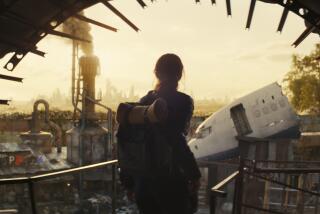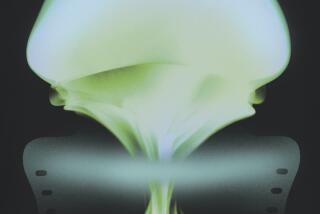Lacking Live Nuclear Tests, Scientists Use Simulations : Defense: Computer modeling and field experiments approximate effects of actual explosions.
WASHINGTON — Now that President Clinton has nudged the United States toward a ban on nuclear weapons testing, the caretakers of the U.S. atomic arsenal are embracing the next best thing to live firings: They’re faking it.
Scientists can simulate characteristics of a nuclear explosion--the tremendous heat, blast, ground shock and release of radiation--both by computer modeling and in field experiments that in most cases use no nuclear materials.
In early July, Clinton said America will not perform nuclear underground tests at least through September, 1994, unless another country does so, and he called for a permanent global ban on testing. The last U.S. nuclear test was in September, 1992, at the Nevada Test Site.
An underground test, code-named Mighty Uncle, is scheduled for 1995 but apparently will be scrapped.
The Pentagon argued for more underground testing but, figuring Clinton would say no, defense officials have speeded up work on new gadgets and facilities to simulate what it may never be allowed to do again below the Nevada desert.
The simulations are designed to answer questions like these:
* What happens to the nuclear material in a warhead if it is exposed to fire?
* How long can a nuclear warhead sit in storage before its chemicals or other components need replacing?
* How big a nuclear blast does it take to destroy a reinforced underground bunker?
* How would a bomber pilot respond to airborne radiation during a nuclear war?
The United States has spent millions of dollars searching for answers to these and many other questions about its nuclear muscle, and the government insists that the quest for information is no less important now that the Cold War is over.
Simulating what the Pentagon euphemistically calls a “nuclear disturbed environment” is not an exact science, but neither is testing underground with the real thing.
“We try to put together the pieces as best we can,” said Paul White, a manager in the nuclear weapons technology office at Los Alamos National Laboratory in New Mexico. “The pieces aren’t exactly right, but they are close.”
It is just that point--the imprecision of the results--that makes physicist Carson Mark wonder why the government should continue spending tax dollars on these tests.
“What use are we going to make of the answers?” he said in an interview. Marks was head of nuclear warhead design at Los Alamos from 1947 to 1973.
American scientists have relied on forms of simulation to develop and test nuclear weapons since the first warheads were built nearly half a century ago. Live tests--above ground for 17 years until an international ban took effect in 1962; underground since then--have always been the military’s preferred method.
But now that Clinton is pushing for a permanent test ban, simulation is gaining importance.
The purposes of nuclear testing are mainly threefold: to develop new nuclear warheads, to gauge the reliability and safety of existing ones, and to study the effects of nuclear blasts on equipment and people.
With the aid of simulators, scientists can mimic nearly all the main functions of live underground tests except those used to develop new warhead designs. But with the Cold War over and U.S. and Russian nuclear arsenals shrinking rapidly, few see a compelling need to invest in new warhead designs.
The Pentagon’s Defense Nuclear Agency this year began building a new X-ray simulator it calls Decade. The agency says that at an estimated cost of $60 million, Decade will be capable of exposing groups of tanks and other military equipment that are 10 times as large as can be accommodated by any of the nine existing X-ray simulators.
Decade is being built at Arnold Air Force Base, Tenn., and is due to be ready in 1996.
The Defense Nuclear Agency also is building what it calls a Large Blast-Thermal Simulator at the White Sands Missile Range in New Mexico. The $65-million facility is due to begin operation in 1995.
More to Read
Sign up for Essential California
The most important California stories and recommendations in your inbox every morning.
You may occasionally receive promotional content from the Los Angeles Times.










